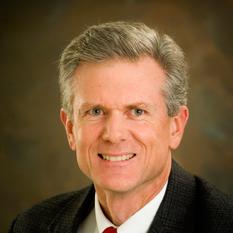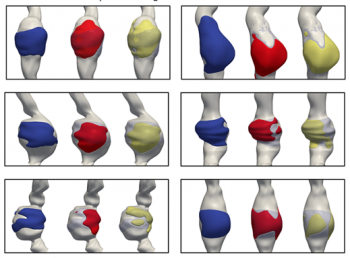Computing the Formation and Growth of a Blood Clot

With help from three systems of supercomputers, including the High Performance Computing Clusters on campus, Yale researchers are figuring out the stages of a blood clot’s formation and growth in abdominal aortic aneurysms (AAAs).
 AAAs are localized enlargements of the aorta, most often found in men 65 years or older. Although most AAAs harbor a blood clot, little is known regarding the development of the clot or its effects on the underlying aortic wall.
AAAs are localized enlargements of the aorta, most often found in men 65 years or older. Although most AAAs harbor a blood clot, little is known regarding the development of the clot or its effects on the underlying aortic wall.
In the lab of Prof. Jay Humphrey, a research team is studying how these clots form and most recently, what factors affect how they grow. This research could help lead to a better understanding of how clots contribute to the risk of rupture of an AAA, which can be lethal. The results of their most recent work have been published in papers appearing in the Proceedings of the Royal Society and the International Journal for Numerical Methods in Biomedical Engineering.
“It’s important for us clinically to know what’s going to happen with a clot,” said Humphrey, the John C. Malone Professor of Biomedical Engineering. “How is it going to grow, how is it going to affect the aortic wall?”
One finding is that the same factors that contribute to the formation of a clot – frictional forces due to blood flow - also prevent the clot from growing to the point of completely filling the AAA. That’s because the frictional force on the clot keeps increasing as the clot gets bigger and encroaches on the flowing blood. “It [the clot] will keep growing until it achieves a certain size and shape such that cells or proteins that try to deposit on the clot will get washed away,” said Humphrey, who also serves as chair of the biomedical engineering department.
To interpret both biological experiments conducted in the lab and clinical observations, lead author Paolo Di Achille, a Ph.D. candidate in Humphrey’s lab, developed computational models of the complex interactions that occur in the formation and growth of the thrombus. Because of the complexity of the problem, calculations required about 100 years of computer time - that is, the amount of time one standard computer would need to solve the problem. It is for this reason that three different supercomputers were used to accomplish this feat. “We have great facilities here at Yale, but this was such a big problem that we not only had to use our high performance computers, but others as well,” Humphrey said.
Working with Humphrey and Di Achille was surgeon-scientist George Tellides, professor of cardiac surgery at the Yale School of Medicine, and the team had valuable assistance from Andrew Sherman, senior research scientist at the Yale Center for Research Computing.

